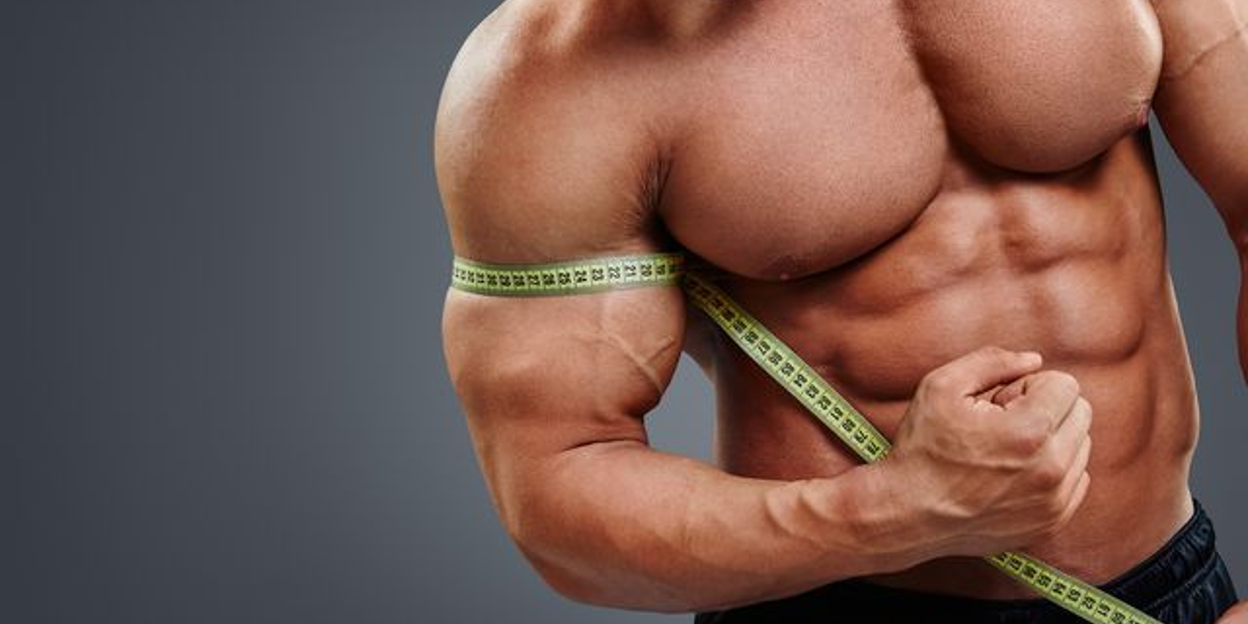Key Takeaways
-
Strength training twice weekly can help women over 50 combat age-related muscle loss.
-
Bodyweight exercises and resistance band workouts provide safe, effective strength training options that minimize joint stress while maximizing functional fitness.
-
A proper strength training program for women over 50 should include all five fundamental movement patterns: pushing, pulling, hinging, squatting, and carrying.
-
Starting with a structured weekly plan alternating between upper body, lower body, and full-body workouts allows for adequate recovery between sessions.
Why Strength Training Becomes Crucial After 50
After 50, women face accelerated sarcopenia—the natural loss of muscle mass that occurs with aging. Without intervention, you can lose up to 3–5% of muscle mass each decade after 30, with the pace quickening after menopause.
This decline doesn’t just affect your appearance; it directly impacts your metabolism, bone density, and ability to perform everyday activities. The good news? Research shows that properly designed strength training can not only slow this loss but actually reverse it, with women over 50 gaining in muscle strength with weeks of consistent training.
Beyond physical benefits, strength training offers powerful mental health advantages for women over 50. Regular resistance exercise has been shown to improve sleep quality, reduce anxiety, alleviate depression symptoms, and enhance cognitive function.
The endorphin release during strength training creates natural mood elevation, while the progressive achievement of fitness goals builds confidence that extends beyond the gym into all aspects of life.
The 5 Best Strength Workouts for Women Over 50
1. Bodyweight Basics: No Equipment Needed

Don't underestimate the power of your own body weight when building strength.
Bodyweight exercises are perfect for women over 50 because they can be easily modified, require no equipment, and naturally respect your body's limitations. The beauty of bodyweight training lies in its functional nature—these movements directly translate to everyday activities, making getting up from chairs, climbing stairs, and maintaining balance noticeably easier.
A complete bodyweight workout should target all major muscle groups with exercises that can be adjusted to your fitness level. Examples include:
-
Modified Push-ups: Begin with wall push-ups, then progress to counter push-ups, and eventually knee push-ups as strength improves.
-
Chair Squats: Stand in front of a sturdy chair, lower until your bottom barely touches the seat, then push back up.
-
Glute Bridges: Lie on your back with knees bent, feet flat on floor, and lift hips toward ceiling, focusing on engaging glutes.
-
Modified Planks: Hold a plank position from knees rather than toes, maintaining a straight line from head to knees.
For women just beginning their strength journey, consistency trumps intensity. Focus on performing these exercises with proper form rather than rushing through them.
2. Resistance Band Training: Gentle Yet Effective

Resistance bands offer the perfect compromise between bodyweight exercises and traditional weights.
Resistance bands provide variable resistance that's particularly joint-friendly—a crucial consideration for women over 50 experiencing age-related joint changes.
The bands' elasticity creates consistent tension throughout each movement, engaging more muscle fibers while reducing impact on sensitive joints. Some examples of exercises you can do with a resistance band include:
-
Band Chest Press: Wrap band around your upper back, holding ends with hands at chest level, then push forward
-
Seated Rows: Secure band around feet while seated, pull handles toward lower ribs while maintaining upright posture
-
Band Pull-Aparts: Hold band at chest height with arms extended, pull band apart by squeezing shoulder blades together
-
Band Squats: Stand on band with feet shoulder-width apart, holding handles at shoulders, then perform squats
-
Lateral Band Walks: Place band just above ankles, take small steps sideways while maintaining tension in the band
3. Dumbbell Circuit: Build Functional Strength

Light dumbbells provide measurable resistance for building strength while allowing precise control over movement.
For women over 50, starting with 2–5 pound weights is appropriate, focusing on proper form before increasing weight. The beauty of dumbbell training lies in its versatility, you can target specific muscle groups while mimicking real-world movements that transfer directly to daily activities.
When designing your dumbbell circuit, include exercises that work multiple muscle groups simultaneously for maximum efficiency. Examples include:
-
Dumbbell Goblet Squats: Hold one dumbbell with both hands at chest level while performing squats
-
Dumbbell Rows: Place one hand and knee on bench, pull dumbbell up with free arm, keeping elbow close to body
-
Overhead Press: Sitting or standing, press weights from shoulder height straight overhead
-
Deadlift: With slight knee bend, hinge at hips to lower weights along legs, then return to standing
-
Dumbbell Curls: Alternating arms, curl weights from extended position to shoulders while keeping elbows stationary
4. Chair-Based Workout: Perfect for Beginners

Performing strength training with a chair removes fear and aids smooth, controlled movements rather than speed.
For women with mobility concerns, balance issues, or those just starting their fitness journey, chair-based exercises offer a safe, effective entry point to strength training.
Using a sturdy chair for support removes fear of falling while still allowing you to build crucial strength in major muscle groups. This accessibility makes chair workouts ideal for maintaining consistency, one of the most important factors in seeing results from any exercise program. Examples you can try include:
-
Seated Marches: Sitting tall, alternately lift knees toward chest while engaging core muscles
-
Chair Stands: Rise from seated position to standing without using hands, then lower back to seat with control
-
Seated Shoulder Press: Holding light weights, press arms overhead from shoulder height
-
Seated Row: With resistance band secured around chair legs, pull band toward torso while squeezing shoulder blades
-
Seated Leg Extensions: Extend one leg until straight, hold briefly while engaging thigh muscles, then lower
5. Balance and Core Focus: Prevent Falls and Improve Stability
Balance naturally diminishes with age, with women over 50 particularly vulnerable to falls that can cause serious injury. A dedicated balance and core workout addresses this critical aspect of fitness directly, strengthening the deep stabilizing muscles that keep you steady on your feet.

Balance exercises create a strong foundation that enhances all other workouts while dramatically improving safety during everyday activities.
When practicing balance exercises, always have a stable surface nearby for support if needed. Begin with 20–30 seconds for each balance position, gradually working up to 60 seconds as stability improves. Stances you could try out include: .
-
Single-Leg Stands: Balance on one foot, progressing from holding a counter to hands at sides to eyes closed
-
Heel-to-Toe Walks: Walk in a straight line placing heel directly in front of toe of opposite foot
-
Bird Dog: On hands and knees, extend opposite arm and leg while maintaining level hips
-
Modified Side Planks: From elbow and knee, lift hips to create straight line from head to knees
-
Standing Clock Reaches: Balance on one leg while reaching other foot to "clock positions" around you
How to Start: Weekly Plan for Strength Training
Monday: Upper Body Focus
Start your week with upper body exercises that strengthen your chest, back, shoulders, and arms. These muscles support proper posture and enable everyday activities like reaching, lifting, and carrying. Begin with 5 minutes of light cardio such as marching in place or arm circles to warm up your muscles and increase blood flow to prevent injury.
Select 4–5 exercises from your preferred workout style above, focusing on pushing and pulling movements. For example, combine chair push-ups, resistance band rows, light dumbbell shoulder presses, and wall angels for a complete upper body session. Perform 8–10 repetitions of each exercise, rest for 30–60 seconds, and repeat the circuit twice.
Wednesday: Lower Body Strength
Mid-week, focus on your lower body to build strength in your hips, legs, and glutes, the largest muscle groups that power daily movements like walking, climbing stairs, and rising from seated positions. These exercises are particularly valuable for women over 50 as they directly combat age-related muscle loss in the lower body and strengthen bones in areas most vulnerable to osteoporosis.
Choose 4–5 exercises that target different parts of your lower body, such as chair squats, glute bridges, seated leg extensions, calf raises, and band lateral walks. Complete 10–12 repetitions of each exercise, taking care to move through a comfortable range of motion without forcing joints. After a brief rest, repeat the circuit twice more for optimal strength development.
Friday: Full-Body Circuit
End your week with a comprehensive full-body workout that ties everything together. This session reinforces the gains made earlier in the week while improving coordination between upper and lower body. A full-body approach maximizes metabolic benefits and ensures no muscle groups are neglected in your weekly routine.
Combine 6–7 exercises that alternate between upper and lower body to create an efficient circuit. For example: chair stands, wall push-ups, glute bridges, resistance band rows, heel raises, and seated overhead presses. Perform 8–10 repetitions of each exercise with minimal rest between movements, take a 60-second break after completing the circuit, then repeat 1–2 more times.
How to Support Your Strength Training Routine
The journey of strength training after 50 represents more than physical transformation—it's reclaiming vitality, independence, and confidence in your body's capabilities. Proper diet, extra vitamins, amino acids, and proteins can serve as a valuable partner in your strength training journey.
Complete amino acid drinks, for example, deliver all nine essential amino acids, including leucine, isoleucine, and valine, the building blocks your muscles need for repair and growth. When combined with balanced electrolytes and powerful adaptogens, these nutrients work together to maintain hydration, support strength gains, and promote faster recovery between workouts.
For optimal results, amino acids are typically consumed before workouts, sipped during training, or enjoyed post-exercise to maximize muscle protein synthesis and recovery.

Complete amino acids like Oh!mino® Muscle Synthesis Activator supports comprehensive muscle protein synthesis for women over 50.
What truly sets successful women over 50 apart isn't the specific exercises they choose, but their commitment to consistency and smart nutritional support. Whether you're performing chair squats in your living room or progressing to dumbbell circuits, your muscles deserve complete nutritional support that enables them to adapt, strengthen, and thrive.
Try Oh!mino® Muscle Synthesis Activator Today!
Frequently Asked Questions (FAQs)
How long should each strength training session last for women over 50?
Begin with 20–30 minute sessions focusing on proper form rather than duration. As you build endurance and confidence, sessions can gradually extend to 45 minutes, but quality movement patterns and adequate rest between exercises remain more important than workout length.
What's the difference between strength training for women over 50 versus younger women?
Women over 50 benefit from longer recovery periods between sessions, greater emphasis on functional movements that support daily activities, and special attention to bone-strengthening exercises. The focus shifts from appearance-based goals to maintaining independence, preventing falls, and supporting overall health and vitality.
How quickly can I expect to see results from strength training?
Most women notice improved energy levels and better sleep within 2–3 weeks. Functional improvements like easier stair climbing or getting up from chairs typically appear within 4–6 weeks. Measurable strength gains and visible muscle changes usually become apparent after 8–12 weeks of consistent training.
How can amino acids support my strength training routine?
Quality amino acids are specifically designed to enhance strength training results for women over 50. Products containing all nine essential amino acids, including BCAAs (branched-chain amino acids), support muscle protein synthesis more effectively than traditional protein products. Formulations with balanced electrolytes help maintain hydration during workouts, while comprehensive amino acid profiles can reduce muscle soreness and speed recovery time between training sessions.





